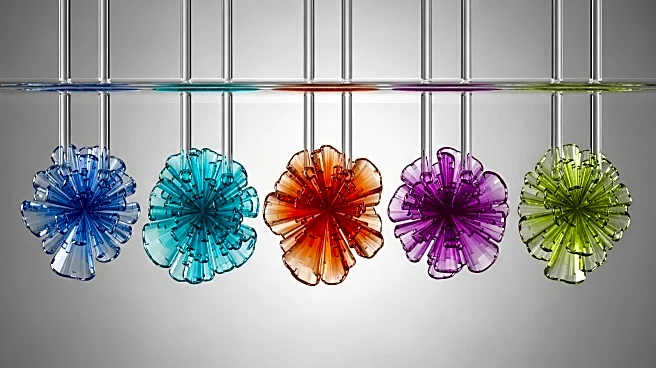What is the story about?
What's Happening?
Scientists in Taiwan have developed a polyurethane organogel that can stretch up to 4,600% of its original length and self-heal at room temperature within 10 minutes. This material, which changes color from orange to blue under mechanical stress, incorporates cellulose nanocrystals and modified mechanically interlocked molecules. The organogel's unique properties make it suitable for applications in flexible electronics, soft robotics, and anti-counterfeiting technologies. The research, published in Advanced Functional Materials, highlights the potential of these gels to revolutionize next-generation technologies.
Why It's Important?
The development of this color-changing, self-healing organogel represents a significant advancement in material science, with potential applications across various industries. Its ability to stretch and recover quickly makes it ideal for use in flexible electronics, which require materials that can withstand repeated bending and stretching. Additionally, the organogel's color-changing properties could be utilized in anti-counterfeiting measures, providing a visual indicator of authenticity. This innovation could lead to more durable and sustainable products, reducing waste and extending the lifespan of consumer goods.
Beyond the Headlines
The organogel's self-healing capability is supported by hydrogen bonding introduced through cellulose nanocrystals, showcasing the potential for sustainable materials in technology. As researchers continue to refine the composition and properties of these gels, they may unlock new applications in fields such as wearable technology and smart textiles. The ability to signal repairs and extend product lifetimes aligns with global efforts to reduce environmental impact and promote sustainability in manufacturing.
AI Generated Content
Do you find this article useful?













